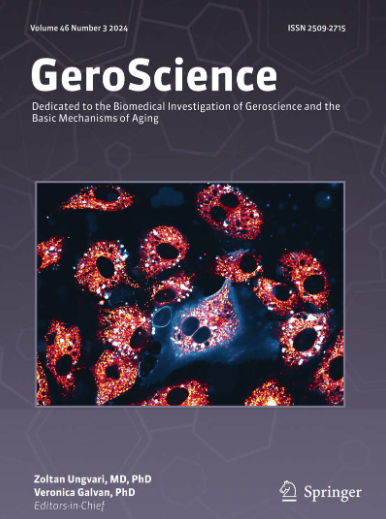极前驱痴呆伴路易体的认知和神经影像学结果。
IF 5.3
2区 医学
Q1 GERIATRICS & GERONTOLOGY
引用次数: 0
摘要
在路易体痴呆(DLB)从前驱阶段到Pro-DLB(主观(SCI)到轻度认知障碍(MCI))的过程中,认知和神经影像学的演变尚不清楚。本研究的目的是从5年的纵向数据分析前dlb患者的发展轨迹。“Lewy- MEMENTO”前瞻性临床队列研究招募了773例脊髓损伤或轻度认知损伤患者。将Pro-DLB组与前驱阿尔茨海默病(Pro-AD)组、“前驱DLB + AD”组(Pro-DLB + AD)组和无前驱DLB和AD组(无症状[NS])进行比较。我们用MRI和脑代谢(FDG - PET)模拟了认知功能的5年演变和脑MRI容量测定的2年演变。与Pro-DLB组和NS组相比,Pro-AD组和Pro-DLB + AD组认知功能下降更严重(P < 0.001)。Pro-DLB组认知功能下降明显高于NS组(P < 0.004)。随访期间,Pro-AD组(13.0 / 100人年)和Pro-DLB + AD组(10.3 / 100人年)的痴呆发生率高于Pro-DLB组(1.02 / 100人年)和NS组(0.44 / 100人年)(P < 0.001)。Pro-DLB + AD组左眼窝额叶皮质代谢下降更大。Pro-AD组和pro-DLB + AD组海马、内嗅皮质、杏仁核和左岛体积减少更大。与Pro-AD和pro-DLB + AD组相比,pro-DLB组患者的认知、功能、脑容量和代谢下降较少。因此,在前驱阶段,DLB将是一种较少退行性和更多功能失调的疾病。本文章由计算机程序翻译,如有差异,请以英文原文为准。
Cognitive and neuroimaging outcome of very prodromal dementia with Lewy bodies.
The cognitive and neuroimaging evolution over the course of dementia with Lewy bodies (DLB) from prodromal stage - Pro-DLB (subjective (SCI) to mild cognitive impairment (MCI)) - is poorly understood. The aim of this study was to analyze from 5-year longitudinal data the trajectories of Pro-DLB patients. The "Lewy- MEMENTO" prospective clinical cohort recruited 773 patients for either SCI or MCI. The Pro-DLB group was compared to a group with prodromal Alzheimer's disease (Pro-AD), a group with "prodromal DLB and AD" (Pro-DLB + AD), and a group without prodromal DLB and AD (no symptom [NS]). We modeled the 5-year evolution of cognitive functions and the 2-year evolution of brain MRI volumetry on MRI and brain metabolism (FDG PET). The Pro-AD and Pro-DLB + AD groups had more cognitive and functional decline than the Pro-DLB and NS groups (P < .001). The Pro-DLB group had more cognitive decline than the NS group (P < .004). Incident dementia during the follow-up was higher in the Pro-AD (13.0 per 100 person-years) and Pro-DLB + AD (10.3) groups than in the Pro-DLB (1.02) and NS (0.44) groups (P < .001). The decline in the metabolism of the left orbitofrontal cortex was greater in the Pro-DLB + AD group. The volume decrease of hippocampi, entorhinal cortices, amygdalae, and left insula was higher in the Pro-AD and the pro-DLB + AD groups. Patients in the pro-DLB group had less cognitive, functional, brain volume, and metabolism decrease than patients in the Pro-AD and pro-DLB + AD groups. DLB would therefore be a less degenerative and more dysfunctional disease at the prodromal stage.
求助全文
通过发布文献求助,成功后即可免费获取论文全文。
去求助
来源期刊

GeroScience
Medicine-Complementary and Alternative Medicine
CiteScore
10.50
自引率
5.40%
发文量
182
期刊介绍:
GeroScience is a bi-monthly, international, peer-reviewed journal that publishes articles related to research in the biology of aging and research on biomedical applications that impact aging. The scope of articles to be considered include evolutionary biology, biophysics, genetics, genomics, proteomics, molecular biology, cell biology, biochemistry, endocrinology, immunology, physiology, pharmacology, neuroscience, and psychology.
 求助内容:
求助内容: 应助结果提醒方式:
应助结果提醒方式:


